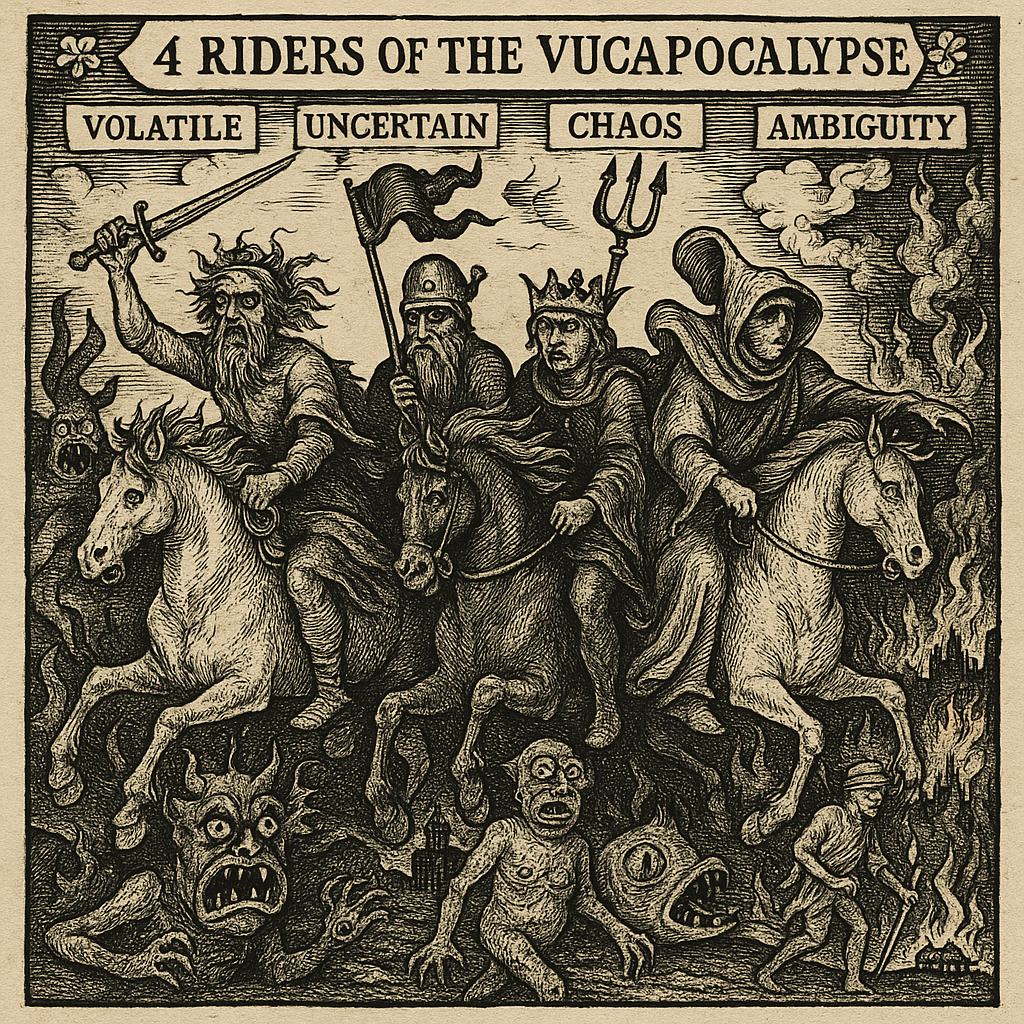A curated reading journey: from defining volatility, uncertainty, chaos, and ambiguity to embracing SPARK as the strategy for resilience and growth.
1. Bennett & Lemoine (2014) – “What VUCA Really Means for You” (HBR)
This article is a cornerstone because it strips away the tendency to use “VUCA” as a buzzword. Bennett and Lemoine argue that leaders too often lump volatility, uncertainty, complexity, and ambiguity together as if they were interchangeable. The real power lies in separating them. Each requires a different type of response: volatility calls for resources and buffers, uncertainty calls for information, complexity calls for structure and expertise, and ambiguity calls for experimentation. By reading this piece, leaders start to see VUCA not as a vague threat, but as a set of diagnosable conditions.
2. Berinato (2014) – “A Framework for Understanding VUCA” (HBR)
Where Bennett and Lemoine set out the distinctions, Berinato builds a practical framework. His message is simple: VUCA isn’t just about survival, it’s about strategy. The framework shows how to recognize which part of VUCA you’re facing and then how to align responses. It’s almost diagnostic: if the environment is volatile, stabilize; if uncertain, explore; if complex, analyze; if ambiguous, experiment. This article makes VUCA usable as a managerial tool instead of just a label for tough times.
3. Taskan, Junça-Silva & Caetano (2022) – “Clarifying the conceptual map of VUCA” (International Journal of Organizational Analysis)
This systematic review scans more than 800 papers to identify where researchers agree and where they don’t about VUCA. Their key finding: the academic community has used VUCA in inconsistent ways, often overlapping terms. Their “conceptual map” is an attempt to bring order to the field and prevent misinterpretation. For practitioners, this article matters because it offers intellectual rigor — showing that VUCA is not just a catchy acronym but a serious analytical lens that needs precision.
4. “Managing VUCA: The Human Dynamics of Agility” (PMC / NIH)
This article looks at the human side of navigating VUCA. It connects the concept directly to agility — the capacity of people and organizations to sense change, adjust rapidly, and keep momentum. The authors argue that VUCA doesn’t just require systems or strategies; it requires humans who can handle ambiguity, tolerate uncertainty, and respond with creativity. This is where the discussion turns to leadership skills, culture, and mindset as much as process.
5. “Leadership Agility in a VUCA World” (Systematic Review, ResearchGate)
Here the focus is on leadership. By reviewing over a hundred studies, the authors show how leaders build “agility” as a capability to survive and thrive in VUCA conditions. They highlight practices such as scenario planning, distributed decision-making, and fostering psychological safety so teams dare to act under unclear conditions. For students or future leaders, this article is a wake-up call: in a VUCA world, technical expertise isn’t enough; agility is a leadership trait you must cultivate.
Why all of these matter together
Taken individually, each article offers a slice of insight: HBR makes VUCA actionable, the systematic reviews give it scientific depth, and the agility-focused papers connect it to leadership and human behavior. Taken together, they form a full-spectrum understanding:
- Conceptual clarity (knowing what VUCA actually is).
- Managerial frameworks (how to respond to each element).
- Human/leadership dimension (how people and culture enable responses).
- Academic rigor (ensuring the concept is robust and not just jargon).
Reading across these pieces is important because it shifts VUCA from a buzzword to a powerful tool. Leaders who study them will not only understand the storm they’re in but will be better prepared to navigate it.
And that is where SPARK enters. Once VUCA is understood deeply — as a real diagnostic of challenges — SPARK can emerge as the positive, constructive lens. Instead of reacting to volatility, uncertainty, chaos, and ambiguity, SPARK offers a way to act sustainably, predictively, with agility, resilience, and knowledge.
